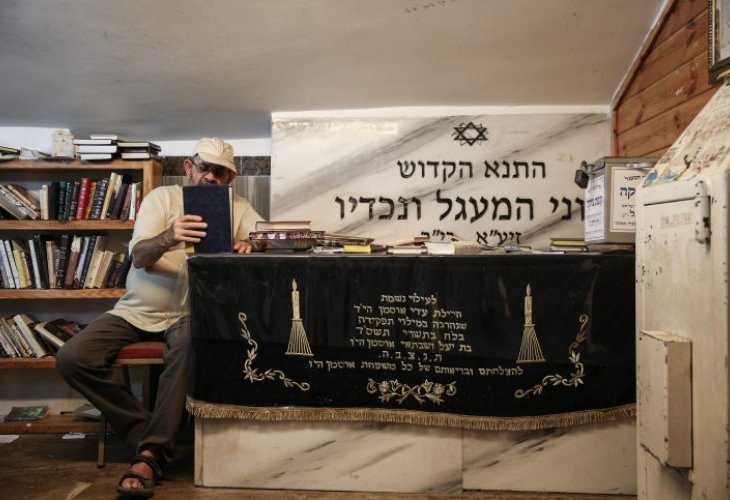The Mystery of Honi the Circle Maker: A Forgotten Sacred Site
Delve into the rich history of Honi the Circle Maker's cave, once a pilgrimage site for rain prayers in Israel. Join us as we uncover its fascinating past and cultural significance.
 (Photo: David Cohen / Flash 90)
(Photo: David Cohen / Flash 90)One of the frequent challenges in Israel is the lack of rain. Many may be familiar with the story of Honi the Circle Maker, who drew a circle and stood inside it until his prayer for rain was answered with showers of blessing and abundance.
It’s intriguing to learn that generations ago, in Israel, the burial cave of Honi the Circle Maker served as a pilgrimage site during times of drought. Our ancestors would pray to Hashem for rain, hoping for a response like the one Honi received in his time.
Rabbi Menachem Mendel of Kamenitz, in his writings "Chronicles of the Times," recounts a severe drought in 1833, leading a delegation of rabbis from Safed—including Rabbi Menachem—to visit Honi's grave in the Arab village of Firim, near Safed. "On our return home, rain fell, and all the wells were filled with water."
The site was sacred to Jews, and when a committee formed to purchase land for settlement in the Galilee, the first location they explored was the lands of Firim, as they were near Honi's cave. The purchase didn’t go through due to the lack of springs, so the group bought lands in Ja'uni, establishing the colony of Rosh Pina, the first Jewish settlement in the Galilee.
Even though they never settled in Firim, the people of the Galilee didn’t forget Honi and his miraculous rain-making. M. Ben Aryeh from Rosh Pina shares: "During a lack of rain, we would descend to Honi the Circle Maker’s cave. Sometimes, intense rain caught us on the way home right after the prayer, and at times, we reached home just before the rain, and sometimes returned all soaked... Honi the Circle Maker never disappointed."
The local Arabs, observing the success of prayers at the righteous man's grave, started praying there too, calling it "Hone El Ma'jal." Occasionally, they even requested Jews to pray during droughts, knowing the power of Jewish prayer, usually limiting the cave's access but opening it to Jews during such times.
In 1888, Rabbi Menachem Mendel Rabin from the Galicia community in Jerusalem visited and found the cave sealed due to soil erosion. With the expansion of Jewish settlements in the Galilee, tensions arose, leading to harassment and vandalism around the site. In 1905, Aharon Klar, a Rosh Pina elder, traveled to Europe to raise funds to buy the sacred site, repair it, and ensure respectful Jewish access.
The mission succeeded. The area was purchased by Aharon Klar, who also served as caretaker and guardian of the sacred site. Restoration work followed several times, reflecting ongoing Arab attacks and vandalism. During the War of Independence, the villagers of Firim fled, and North African immigrants established the Jewish city of Hatzor HaGlilit nearby. Today, the location is renovated and maintained, accessible to all, yet its significance has somewhat faded, with more people visiting Safed's cemetery or Rabbi Shimon bar Yochai's tomb.

